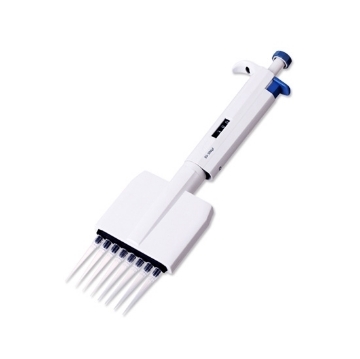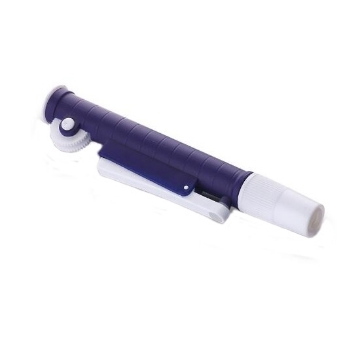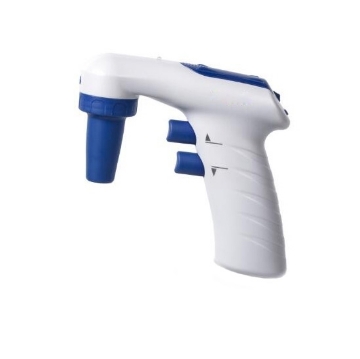Pipettes
Multichannel Micropipette, 8/12 Channel, 0.5-10µl/5-50µl/50-300µl
Pipette Pump, 2ml/10ml/25ml
Single Channel Electronic Pipette Controller, 0.1ml-200ml
Single Channel Volume Micropipette, 0.1-2.5µl/0.5-10µl/5-50µl/20-200µl/100-1000µl
Mini Pipette, 25-300μL
A pipette is a measuring tool that transfers liquid from the original container to another container within a certain range. It is widely used in the fields of medical, biotechnology, food, pharmacy and chemistry, etc. SISCO offers you variable volume single channel micropipettes 0.1µL-10mL, multichannle pipettes 0.5µL-300µL, electronic pipettes 0.1ml-200ml and manual pipette pump 2mL/10mL/25mL. The pipettes feature light weight and ergonomic design, conveniet and easy operation, accurate transfer of liquid, ideal for repetitive liquid handling in the laboratories.
How Does a Pipette Work?
A pipette is a laboratory tool used to measure and transfer small volumes of liquid with precision. It works by creating a vacuum to draw liquid into a disposable tip or a fixed tube. There are several types of pipettes, including manual, electronic, and micropipettes, but the basic principle remains similar.
To operate a manual pipette, the user presses a plunger to expel air from the tip. When the plunger is released, the vacuum created draws the desired volume of liquid into the tip. To dispense the liquid, the user presses the plunger again, expelling the liquid from the tip. The volume can be adjusted by turning a dial on adjustable pipettes. Electronic pipettes automate this process for higher accuracy and less manual effort. Micropipettes, designed for very small volumes (e.g., microliters), function similarly but with finer control.
What Safety Precautions Should be Taken When Using a Pipette?
Pipettes are essential laboratory tools used to accurately measure and transfer liquids. However, improper use can lead to contamination, injury, or inaccurate results. Following safety precautions is crucial to ensure safe and efficient pipette use.
- Personal Protective Equipment (PPE). Always wear appropriate PPE, including lab coats, gloves, and safety goggles, to protect yourself from potential splashes, spills, or exposure to hazardous substances.
- Proper Handling and Posture. To minimize strain and injury, hold the pipette comfortably and maintain a neutral wrist position. Use both hands when attaching or ejecting tips to avoid excessive force. Keep elbows close to the body to reduce stress on the arms and shoulders.
- Pre-Use Inspection. Before use, check the pipette for damage or residue from previous use. Ensure the pipette tips are clean and fit securely to avoid leakage or inaccurate measurements. Calibrate and maintain the pipette regularly according to the manufacturer's instructions.
- Safe Pipetting Techniques. Never pipette by mouth; always use a mechanical pipette for liquid aspiration. Avoid using a pipette with volatile, corrosive, or infectious materials without appropriate containment, such as a fume hood or biosafety cabinet.
- Preventing Contamination. Use sterile tips when handling biological or sensitive samples. Change tips between different solutions to prevent cross-contamination. Avoid touching the pipette tip to surfaces or the inside of containers.
- Liquid Handling and Disposal. Never exceed the pipette's maximum volume to avoid damaging the equipment. Dispense liquids gently to minimize aerosol formation, especially with hazardous or infectious materials. Dispose of tips and leftover liquids in designated containers as per laboratory safety protocols.
- Cleaning and Maintenance. After use, clean the pipette thoroughly, especially when handling hazardous substances. Decontaminate and sterilize the pipette regularly to maintain accuracy and hygiene. Store pipettes upright to avoid contamination and damage.
By adhering to these safety precautions, laboratory personnel can minimize risks associated with pipette use, ensuring accuracy, safety, and reliability in liquid handling procedures.
What are the Differences Between Single Channel and Multi Channel Pipette?
A single channel and a multi channel pipette are both essential laboratory tools for transferring liquids, but they serve different purposes and have distinct features.
- Single Channel Pipette: A single channel pipette is designed to transfer liquid from a single source to one destination at a time. It typically features a single tip that can hold a precise volume of liquid, and is adjustable to accommodate different volumes depending on the specific model. Single channel pipettes are versatile and commonly used in many laboratory settings, especially when handling a variety of samples individually. They are ideal for precise, accurate measurements of small volumes (from microliters to milliliters) in applications like PCR, cell culture, or enzyme assays.
- Multi Channel Pipette: A multi channel pipette, on the other hand, is designed to transfer liquid to multiple destinations simultaneously. It typically has 8, 12, or even 16 channels (or tips), allowing for the handling of multiple samples at once. This is particularly useful in high-throughput applications like microplate assays, where many samples are processed in parallel. Multi channel pipettes can be fixed-volume or adjustable, but they generally offer higher throughput and efficiency, reducing the time and effort required for tasks like filling microplates or performing dilutions across multiple wells.






